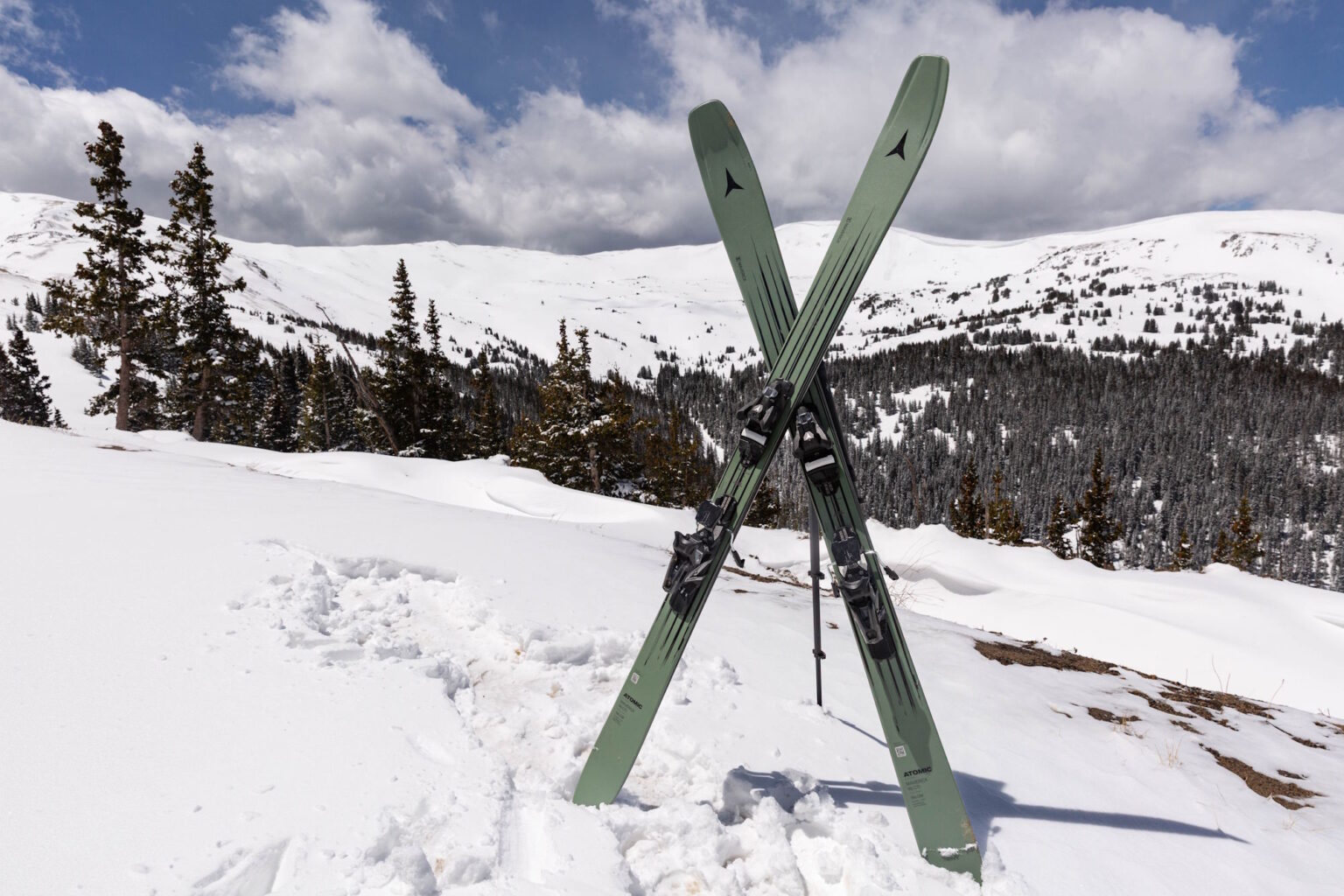Ski brands have a bad habit of claiming one product can do everything. All-mountain skis are the worst offenders. Claims get made about a ski being “perfect” for powder, park, racing, backcountry touring, and freeride. And the new 2025-2026 Atomic Maverick 96 CTI has been entered as the brand’s latest “quiver of one.”
It’s just not true. Powder skis dominate on powder, and carving skis hold an edge that no all-mountain ski can match. But having ridden the Mavericks 96 CTI in various conditions, from deep powder to hard-packed groomers, I must admit that it’s very darned versatile and more than a little surprising.
While the Maverick 96 CTi has a narrower waist than many of the current all-mountain skis in the 100-106mm range, it skis fatter than most of them. That’s thanks to a big, rockered shovel and tip splay in the HRZN Tech, found across many Atomic planks, including the Backland touring lineup.
In short: The new Atomic Maverick 96 CTI ($750) is a very directional all-mountain ski that’s exceptionally capable in most conditions around the mountain. Huge 130mm tips keep you afloat in soft snow, making you forget you ever thought they were on the skinny side. Meant to be mounted fairly far back, it skis quicker than its length and feels far more centered than it looks. The waist width makes it a capable carver on frontside terrain.
Read the Best All-Mountain Skis buyer’s guide to see how the Atomic Maverick 96 CTI stacks up.
-
Skis better than its specs in soft snow -
Stable at high speeds -
Good carving performance
-
Limited freestyle chops -
Expensive
Why I Tested: New Atomic Maverick 96 CTI All-Mountain Skis
Every ski brand wants to make the ultimate all-mountain ski because everyone wants a ski that can do it all. In reality, Atomic has already done that with the wildly popular Bent Chetler line: a fun, forgiving ski in a range of widths. The Bent is pretty capable in almost any conditions.
So why bother pushing the Maverick line into the same space if they’re already claiming a big chunk of it?
The Maverick 96 CTI replaces the Maverick 95 Ti, which had a similar shape but was more of a frontside-first construction. New for 2025-2026, the Maverick 96 CTI loses some metal and brings in more solid wood. It’s closer to the Bent line in terms of weight and soft snow performance.
I think Atomic knows what it’s doing here, even if it seems like the Maverick and Bent lines overlap. The Bent skis are fun for any ability level. But they’re a softer ski that leans freestyle and doesn’t hold up as well to high speeds as the Maverick.

Testing Conditions
By making the Maverick 96 CTI more soft snow–capable, it appeals to a broader group of skiers. I fall in that group. Skiers like me mostly ski facing forward, like to explore the entire mountain, and want to go fast whenever possible. Some hard-snow skiers will lament the changes. But there are plenty of other skis for folks who spend most of their time on the mountain’s front side.
I tested the new Maverick 96 CTI for about 15 days over a month and a half. Throwing them in as many conditions as possible, I took them from boot-deep powder to chopped soft snow to ice. Throughout the season, I found their strengths and weaknesses. But overall, I discovered that they cover more conditions capably than any other all-mountain skis I tested this season.
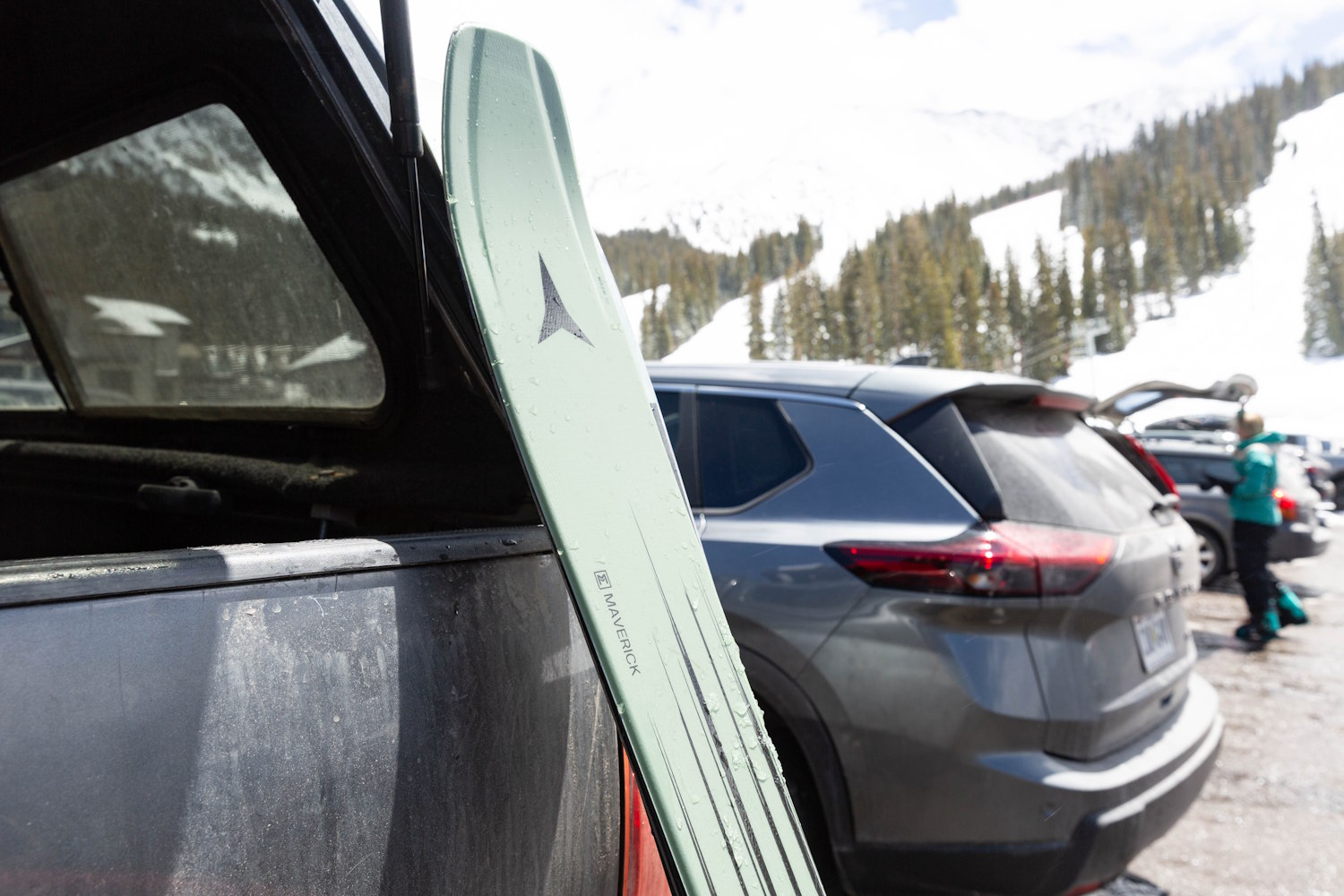
Unique Construction & Shape
The biggest differences between the Maverick 96 CTI and its predecessor, the Maverick 95 Ti, are in the build. The dimensions are nearly the same but now, in the CTI, there’s more tail rocker and a powder-plowing tip. There’s also a bit more weight despite losing some metal in favor of carbon and wood.
There’s slightly less positive camber underfoot, which dings the groomer performance a bit but improves soft snow ride stability. It also claims improved vibration damping, stability at speed, and predictable flex. I never skied the Maverick 95, so I can’t compare them directly. But the description of the ski’s strengths checks out on snow.
Unlike the Bent series — a very light build with poplar wood and carbon stringers — the Maverick CTI has titanal stringers in a poplar and ash wood core. If that doesn’t mean anything to you, ash is a stiffer wood usually used some of Atomic’s Redster line.
Then, metal helps stiffen the ski and dampen vibrations. On snow, this means the Maverick is better-equipped to handle speed confidently. Alternatively, softer skis (such as the Bent Chetlers) are more at home skiing playfully at slower speeds.
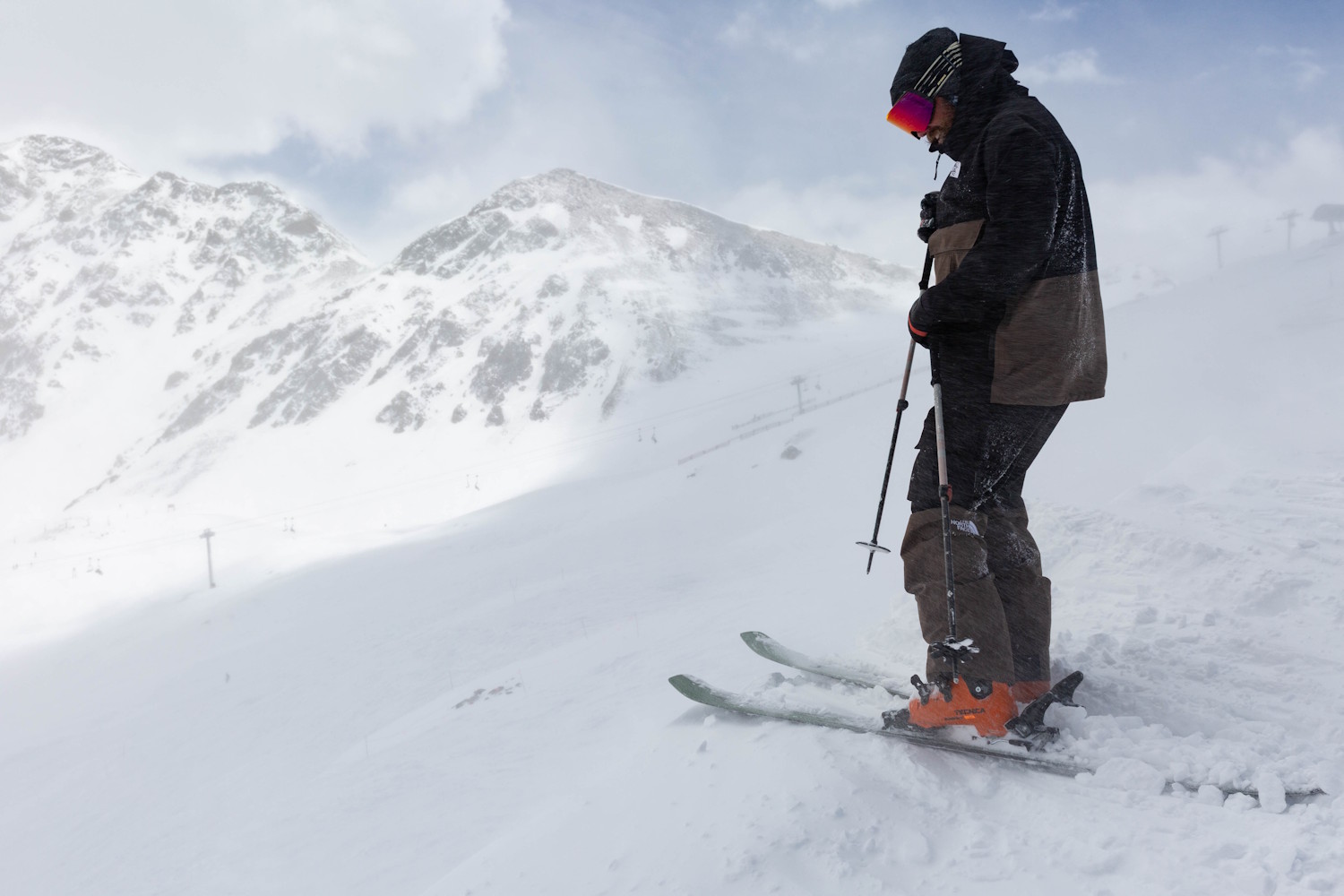
Atomic Maverick 96 CTI Review: Frontside Performance
Despite soft-snow performance, the Maverick 96 CTI is a capable carver for almost anyone who isn’t a current or former racer. I skied it on early morning ice and slushy spring groomers and found it easy to initiate and hold turns.
The 96mm waist means it’s not a dedicated groomer ski, of course. But they’re narrow enough that you can have a blast dropping your hips into deep cuts into corduroy. Plenty of mid-fat all-mountain skis, such as the Volkl Mantra and Dynastar M-Pro lines, pull this off as well.
But I’d argue that the Maverick balances its abilities better. For casual carvers like me, they’re super easy to initiate turns. They aren’t so stiff that you need to weigh 200 pounds and squat 500 to get good turns out of them.
The 96mm width is much more fun to carve with than any of the skis in the popular 100-108 range. But there’s also a Maverick 88 Ti for East Coasters and other folks that spend more time on hard snow — they just won’t have as much fun when the storms roll in.
Keep in mind that much of the rockered front of the ski isn’t engaged when carving. So even the longest Maverick 96, at 186 cm, will feel much shorter. It’s better suited for short- and medium-radius turns than massive arcing GS lines.
If I had a gripe with the frontside performance, it’s that the relatively shallow camber doesn’t give you as much energy coming out of turns as some other skis and, most likely, the predecessor model. But that slight deficiency on the groomers translates into benefits on soft snow.
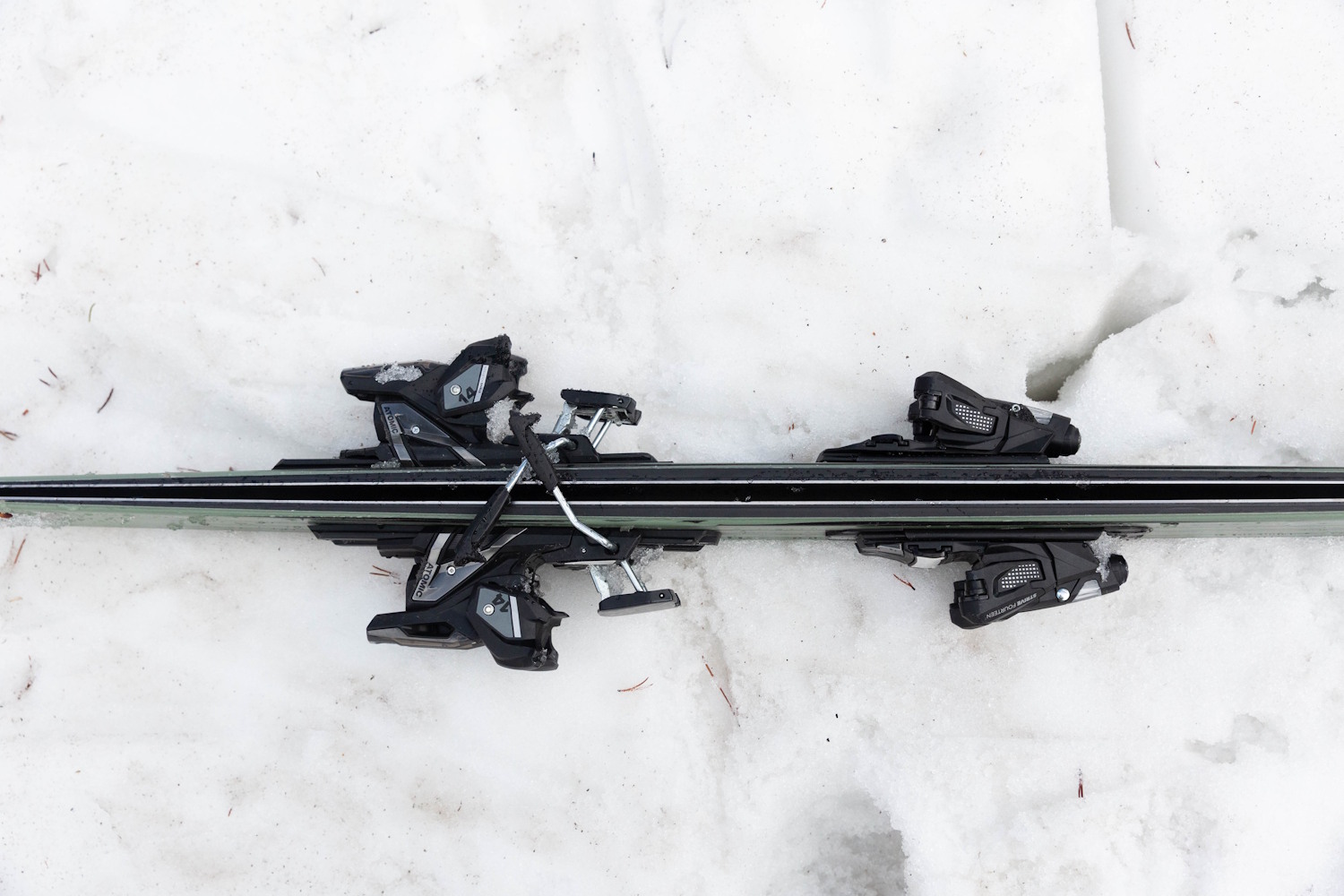
Surprising Soft Snow Fun
As someone who tests a wide range of all-mountain skis every season, I know that waist width matters when you get into soft snow conditions. In cold and light powder, I opt for a ski with a minimum waist width of 114mm, all else being equal. Even in choppier soft snow — such as end-of-pow-day debris — fatter skis smooth things out the same way that bigger bike tires smooth out rough trail.
So I expected a letdown when I first hauled the Maverick 96 on a hike to the top of a field of 6 inches of untouched low-moisture pow in the high alpine sidecountry. Thankfully, I was wrong. These 96 skis planed confidently on top of the snow at speed, never finding bottom. I never hesitated to reach for them again, knowing they’d be just as fun in a surprise pow stash as they are in mixed conditions.
In mixed crud and chop, I appreciated the ski’s stability. The HRZN Tech 3D nose does a great job keeping the skis afloat when the narrower waist on another ski shape would want to dive underneath.
I think the shallower camber helps here, as I’ve found that more aggressively cambered skis tend to cut through lighter snow in search of something to hold on to. An even fatter ski, such as the Maverick 115 CTI, does even better in this regard — but it’s not nearly as fun in frontside terrain.
The limited tail rocker and traditional squared-off tail shape pays dividends for carving. But it makes the ski harder to disengage when the crud gets thick and heavy. If this is where you spend most of your time, a fatter freeride-oriented ski — such as the Scott SEA 106 or something from the Salomon QST line — will be a bit easier to pilot.
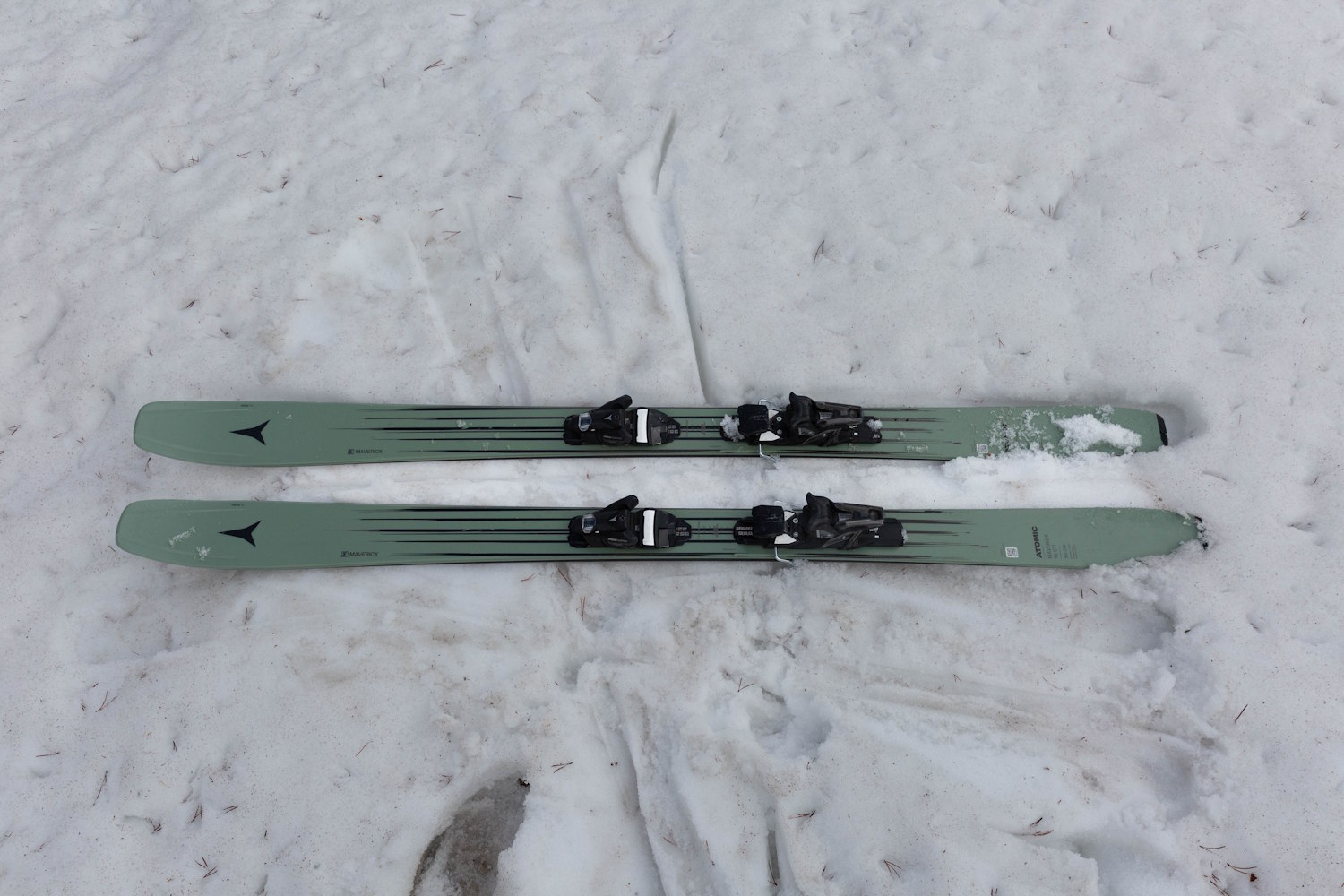
Limitations
Like Atomic, I’ve used a lot of ink to share how well-rounded these skis are. But no ski is great at everything. In general, the Maverick skis are great at maintaining stability at speed in a range of conditions, but there are scenarios where they come up short. They’re too fat for full-time carving enthusiasts.
Freestyle and park riders should look elsewhere for a few obvious reasons. Flatter tails and forward mounting points mean these won’t be a fit for new school skiers that want true twin tips and lots of pop for spinning off side hits.
The traditional tail and mounting prioritize traditional skiing style. That makes landing switch more challenging than it needs to be if you’re spinning a lot. If this is you, stop reading and check out the Armada ARV 100, a park-oriented all-mountain ski with true twin tips and a centered mount.
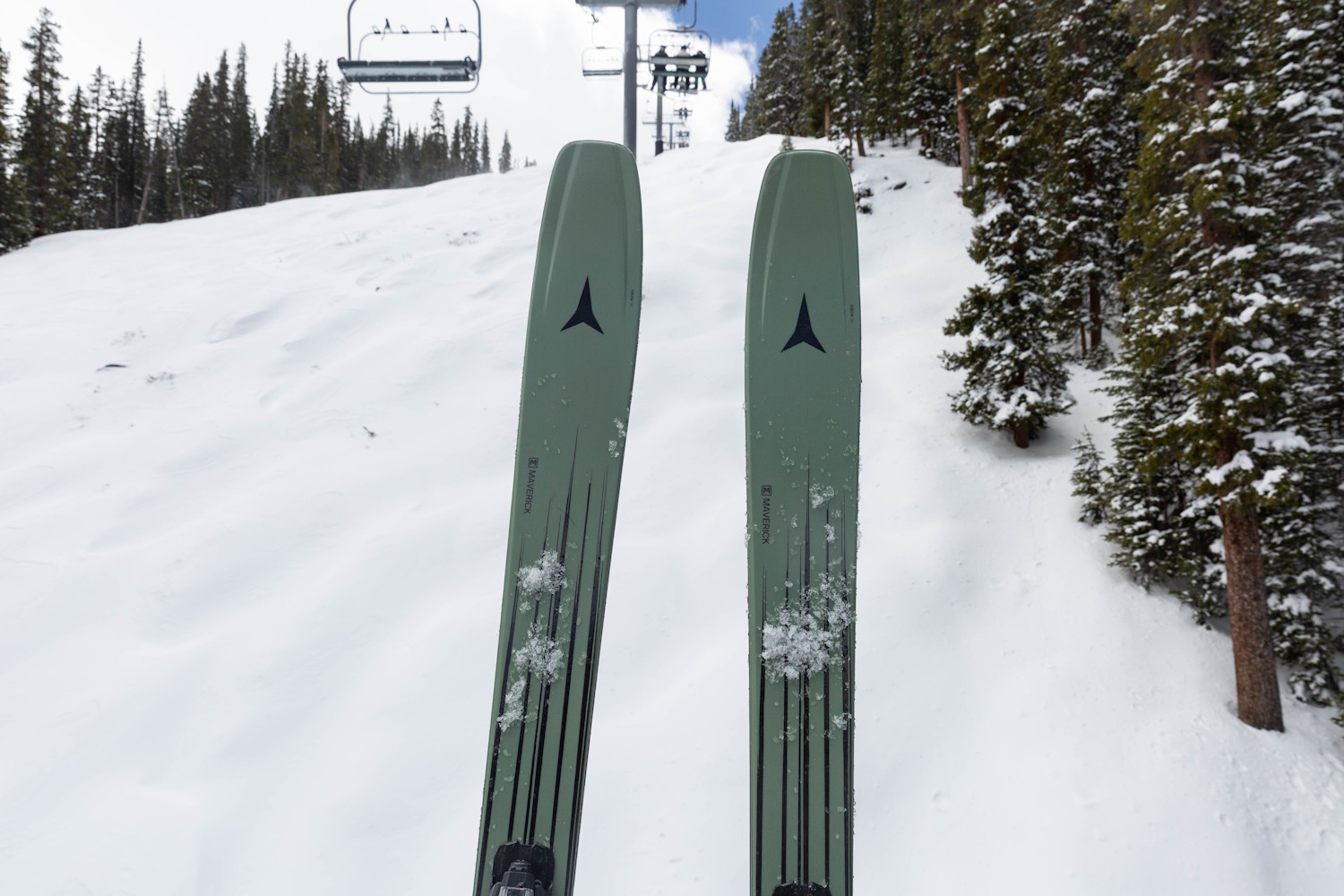
Conclusion: Atomic Maverick 96 CTI Review
With the reimagined Atomic Maverick 96 CTI, this pair has a broader appeal without dumbing it down or making a Bent Chetler clone. This all-mountain design should appeal to any hard-charging, directional skiers with a soft snow bias that don’t want to give up fun-carving groomers. And while it wants to go fast, it’s a forgiving and intuitive ski that shows you the way instead of driving you around.
These won’t be everyone’s all-mountain ski, but they cover a wider swath of the gigantic “all-mountain” spectrum than most other contenders.
As with any all-mountain ski, there are compromises. You’d arguably be happier with three pairs of specialized skis for every kind of condition. But there’s something satisfying in an all-mountain ski like this one that delivers on the promise to be fun no matter what the mountain throws at you.
Read the full article here



